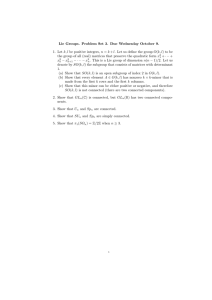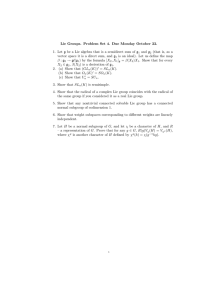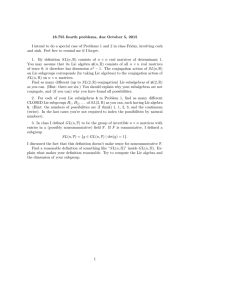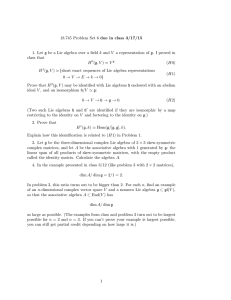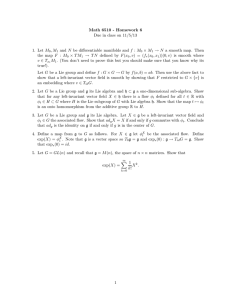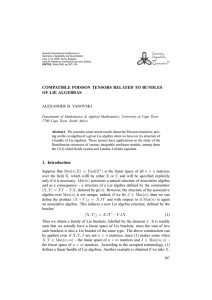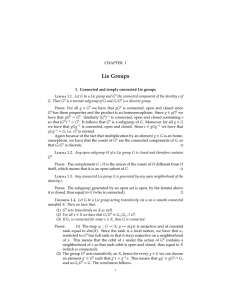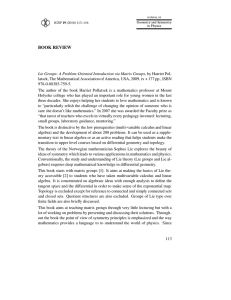18.755 fifth problems, due Monday, October 19, 2015
advertisement
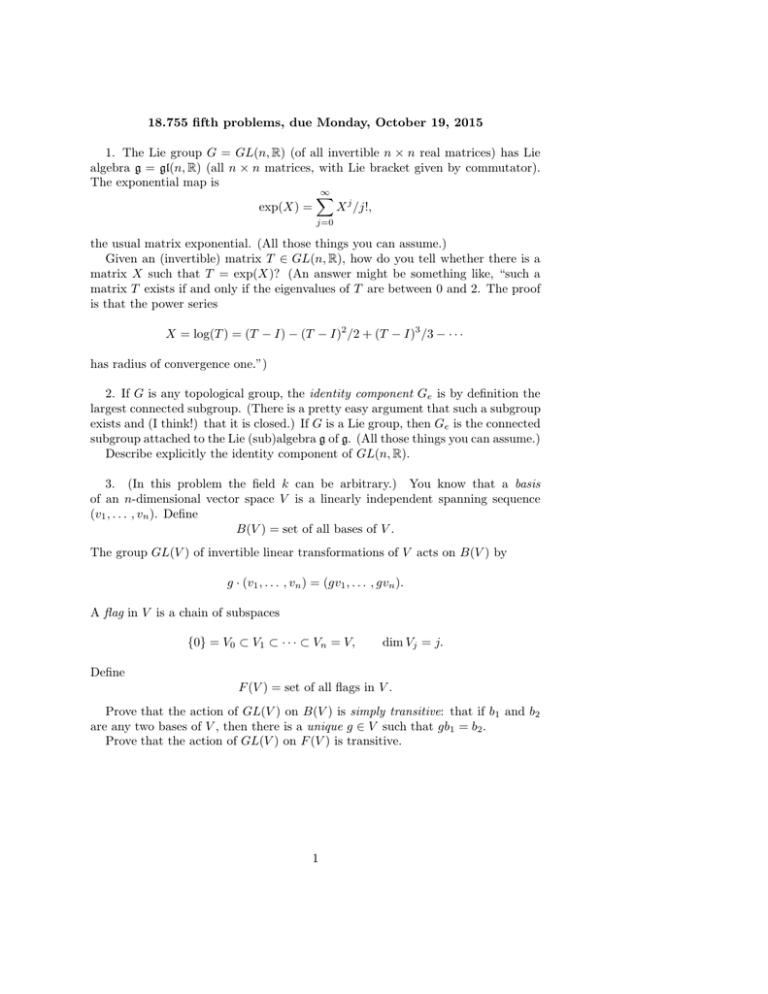
18.755 fifth problems, due Monday, October 19, 2015
1. The Lie group G = GL(n, R) (of all invertible n × n real matrices) has Lie
algebra g = gl(n, R) (all n × n matrices, with Lie bracket given by commutator).
The exponential map is
∞
X
X j /j!,
exp(X) =
j=0
the usual matrix exponential. (All those things you can assume.)
Given an (invertible) matrix T ∈ GL(n, R), how do you tell whether there is a
matrix X such that T = exp(X)? (An answer might be something like, “such a
matrix T exists if and only if the eigenvalues of T are between 0 and 2. The proof
is that the power series
X = log(T ) = (T − I) − (T − I)2 /2 + (T − I)3 /3 − · · ·
has radius of convergence one.”)
2. If G is any topological group, the identity component Ge is by definition the
largest connected subgroup. (There is a pretty easy argument that such a subgroup
exists and (I think!) that it is closed.) If G is a Lie group, then Ge is the connected
subgroup attached to the Lie (sub)algebra g of g. (All those things you can assume.)
Describe explicitly the identity component of GL(n, R).
3. (In this problem the field k can be arbitrary.) You know that a basis
of an n-dimensional vector space V is a linearly independent spanning sequence
(v1 , . . . , vn ). Define
B(V ) = set of all bases of V .
The group GL(V ) of invertible linear transformations of V acts on B(V ) by
g · (v1 , . . . , vn ) = (gv1 , . . . , gvn ).
A flag in V is a chain of subspaces
{0} = V0 ⊂ V1 ⊂ · · · ⊂ Vn = V,
dim Vj = j.
Define
F (V ) = set of all flags in V .
Prove that the action of GL(V ) on B(V ) is simply transitive: that if b1 and b2
are any two bases of V , then there is a unique g ∈ V such that gb1 = b2 .
Prove that the action of GL(V ) on F (V ) is transitive.
1
